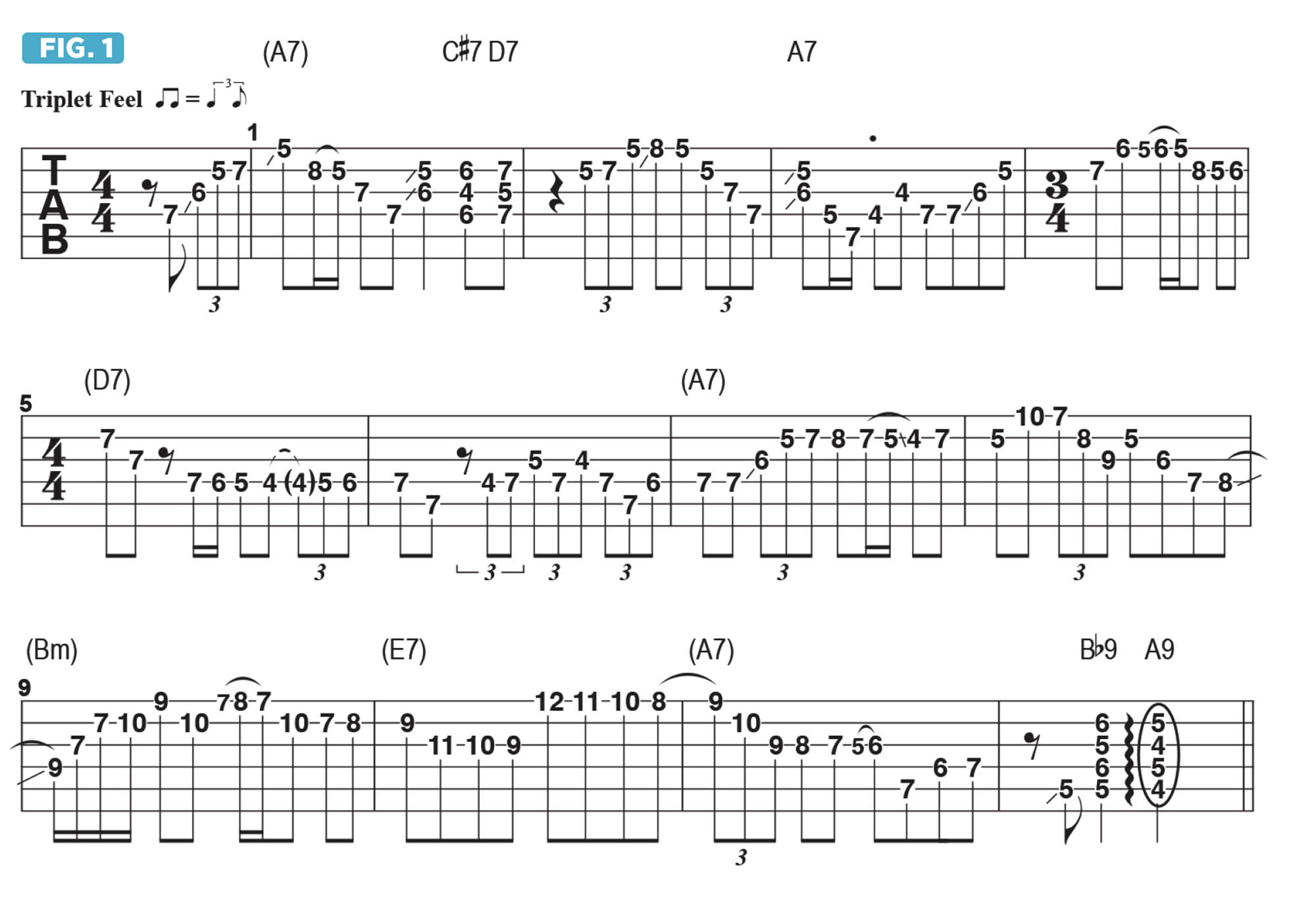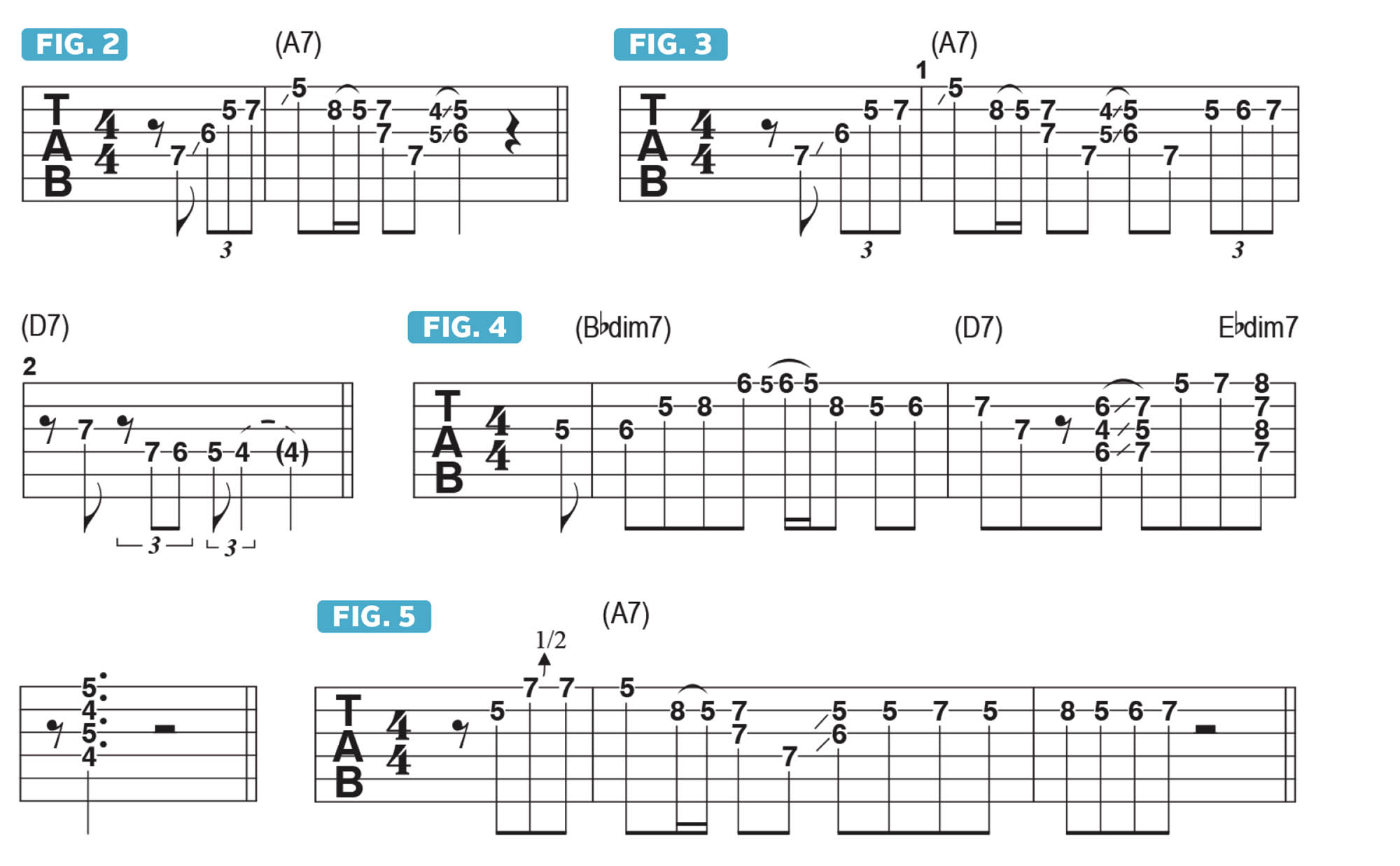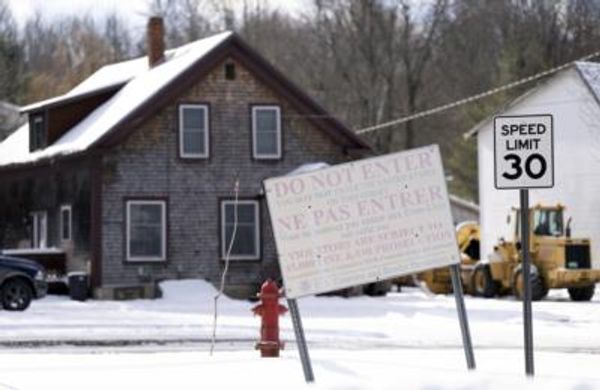Over the last few columns, I’ve been discussing the three devices I like to use to connect chords when soloing within a blues progression: chromaticism, diminished chords and ii - V - I turnarounds. I offered a lot of different examples of how to use each of these approaches when formulating an improvised solo.
When I’m improvising a solo over a blues progression, however, I don’t want to be thinking too much about this stuff, but rather feeling the music and breathing life and emotion into the spontaneous lines.
I’m never thinking, “Oh, I need to play a bunch of ii - V - I’s now!” or, “This chorus is going to be all about chromaticism.” Instead, I’m just following my inner voice and playing what I hear musically, doing my best to connect the dots with all of these ideas together at the same time. Sometimes I don’t use any of these approaches; I’ll just play “straight” blues phrases because the blues is the greatest thing in the world.
Figure 1 presents an improvised solo played over a 12-bar blues in A, utilizing these approaches but without thinking about them too much. Instead, I just followed my creativity. In a general sense, my goal is to anticipate each chord change, which means that, if I’m heading from the I chord, A7, to the IV chord, D7, I’ll end my A7 phrase with a few notes that relate to the downbeat of “one” on the D7 chord.

Figures 2 to 5 offer a breakdown of a few of the ways in which I’ll set up the change from the I chord to the IV.
In Figure 2, I start the solo with a pickup bar. To me, this is a very horn-like line, as I play the notes of an A major triad (A, C#, E) followed by F#, and then I land on a high A note on the downbeat of “one” over the initial A7 chord.
Notice the use of chromatic slides up to the C# and high A notes, which emulate the upward glissando of a horn. In bar 2, I quickly descend with a pull-off from G to E, followed by double-stop dyads (two-note chords) that represent the sound of D/A to A.

Figure 3 is a breakdown of what I played in bars 3 and 4 of Figure 1. After stating the initial line over A7 in bar 1, I end the line with ascending chromatic movement, from E to F to F#, setting up the change to the IV chord, D7, as F# functions as its major 3rd. This is followed by descending chromaticism in the next bar – A, G#, G, F# – which again relates clearly to D7.
In bar 4 of Figure 1, I also incorporated a diminished idea to set up the IV chord, as shown in Figure 4. In bar 1, I bring in Bb. When Bb is substituted for A in an A7 voicing, we get the notes C#, E, G and Bb, which spell a Bbdim7 chord. In bars 2 and 3, I bring in Ebdim7 (Eb, Gb, A, C) to set up the change back to the I, A7.
At this point, I moved back to playing straight blues licks, as shown in Figure 5, which ends with a nod toward setting up a ii - V - I substitution of Bm7 - E7 - A7.







